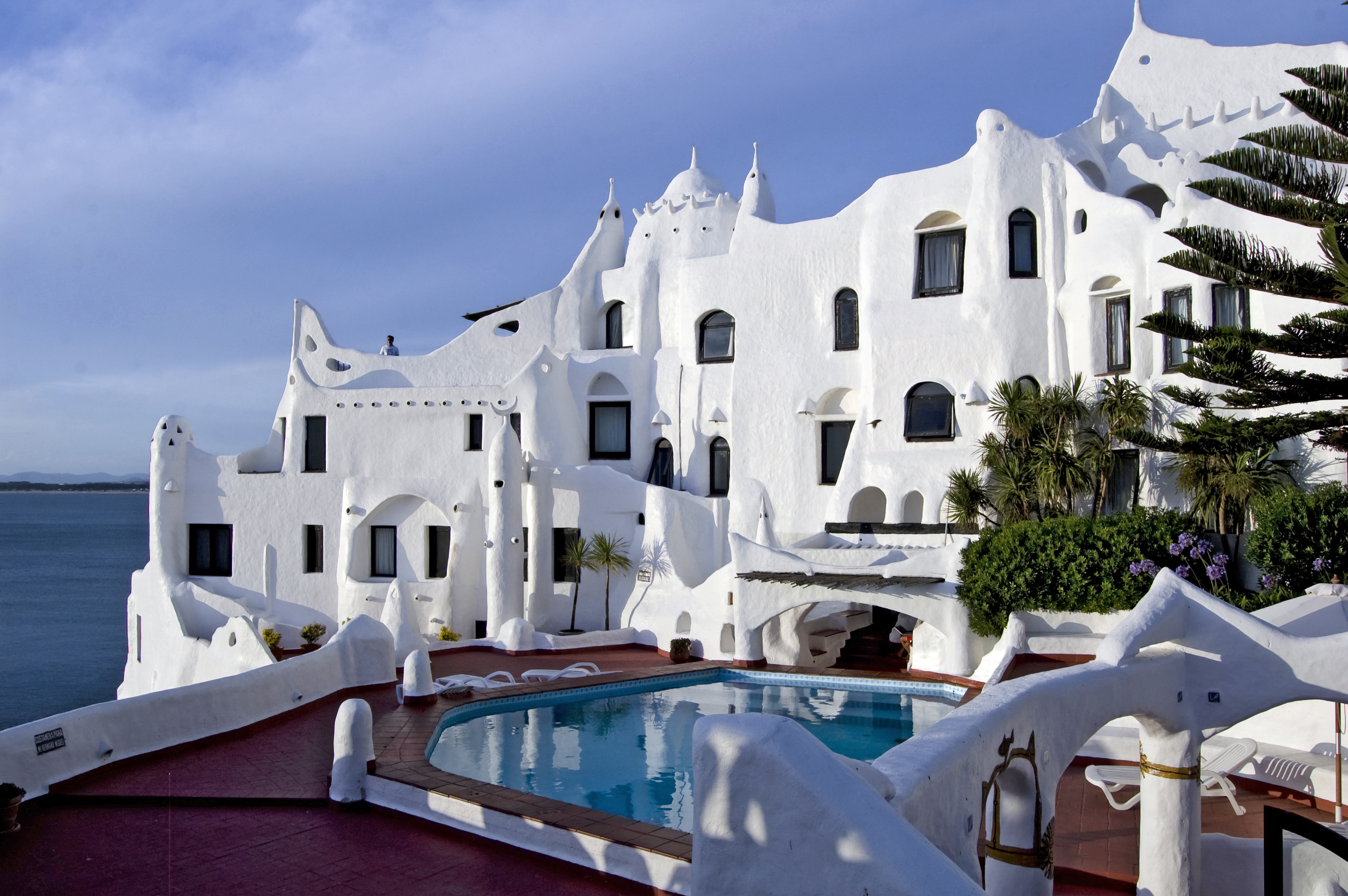|
Hermit House
Hermit House is an earthen residence situated on a cliff overlooking the Mediterranean near the Sidna Ali Mosque in Herzliya, Israel, and is an example of vernacular architecture. Its owner, designer, and creator, Nissim Kahlon, has been building the structure solely by hand since the late 1970s, tunnelling deep into the cliff side and using natural sea materials. The structure includes dozens of chambers covered in highly elaborate tile mosaics made of recycled materials such as blue glass from broken Maccabee beer bottles, plates, and other debris washed ashore. Local city authorities have so far been unable to oust the non-code-compliant resident. Rising sea levels, caused in part by the city's construction of a jetty, pose a threat to Cachlon's work of several decades. Hermit House's exterior is publicly visible and requests for interior tours are occasionally honoured by its owner. See also *Watts Towers, intricate Gaudiesque towers decorated with found objects *Forestiere U ... [...More Info...] [...Related Items...] OR: [Wikipedia] [Google] [Baidu] |
Herzliya Caveman House
Herzliya ( ; he, הֶרְצְלִיָּה ; ar, هرتسليا, Hirtsiliyā) is an affluent city in the central coast of Israel, at the northern part of the Tel Aviv District, known for its robust start-up and entrepreneurial culture. In it had a population of . Named after Theodor Herzl, the founder of modern Zionism, Herzliya covers an area of . Its western, beachfront area is called Herzliya Pituah and is one of Israel's most affluent neighborhoods and home to numerous embassies, ambassadors' residences, companies headquarters and houses of prominent Israeli business people. History Herzliya, named after Theodor Herzl, was founded in 1924 as a semi-cooperative farming community (moshava) with a mixed population of new immigrants and veteran residents. During that year, 101 houses and 35 cowsheds were built there, and the village continued to grow. The 1931 census recorded a population of 1,217 inhabitants, in 306 houses.Mills, 1932, p13/ref> Upon the establishment of th ... [...More Info...] [...Related Items...] OR: [Wikipedia] [Google] [Baidu] |
Carlos Páez Vilaró
Carlos Páez Vilaró (1 November 1923 – 24 February 2014) was a Uruguayan abstract artist, painter, potter, sculptor, muralist, writer, composer and constructor. Life and work Carlos Páez Vilaró was born in Montevideo, Uruguay, in 1923. He took up drawing in 1939 and relocated to Buenos Aires, where he worked as a printing apprentice in the industrial Barracas section of the Argentine capital. Returning to Montevideo in the late 1940s, he developed an interest in Afro-Uruguayan culture. Settling in Montevideo's primarily black neighbourhood of "Mediomundo" ("Half-World"), he studied the Candombé and Comparsa dances characteristic to the culture. He composed numerous musical pieces in the two genres and conducted an orchestra. His group's congas and bongos were decorated with their leader's own thematic drawings, as well. His interest in the culture later led him to Brazil, home to the western hemisphere's largest population of African descent. Páez Vilaró was invited to e ... [...More Info...] [...Related Items...] OR: [Wikipedia] [Google] [Baidu] |
Houses In Israel
A house is a single-unit residential building. It may range in complexity from a rudimentary hut to a complex structure of wood, masonry, concrete or other material, outfitted with plumbing, electrical, and heating, ventilation, and air conditioning systems.Schoenauer, Norbert (2000). ''6,000 Years of Housing'' (rev. ed.) (New York: W.W. Norton & Company). Houses use a range of different roofing systems to keep precipitation such as rain from getting into the dwelling space. Houses may have doors or locks to secure the dwelling space and protect its inhabitants and contents from burglars or other trespassers. Most conventional modern houses in Western cultures will contain one or more bedrooms and bathrooms, a kitchen or cooking area, and a living room. A house may have a separate dining room, or the eating area may be integrated into another room. Some large houses in North America have a recreation room. In traditional agriculture-oriented societies, domestic animals such as c ... [...More Info...] [...Related Items...] OR: [Wikipedia] [Google] [Baidu] |
Vernacular Architecture
Vernacular architecture is building done outside any academic tradition, and without professional guidance. This category encompasses a wide range and variety of building types, with differing methods of construction, from around the world, both historical and extant, representing the majority of buildings and settlements created in pre-industrial societies. Vernacular architecture constitutes 95% of the world's built environment, as estimated in 1995 by Amos Rapoport, as measured against the small percentage of new buildings every year designed by architects and built by engineers. Vernacular architecture usually serves immediate, local needs; is constrained by the materials available in its particular region; and reflects local traditions and cultural practices. Traditionally, the study of vernacular architecture did not examine formally schooled architects, but instead that of the design skills and tradition of local builders, who were rarely given any attribution for the w ... [...More Info...] [...Related Items...] OR: [Wikipedia] [Google] [Baidu] |
Cambria, California
Cambria () is a seaside village in San Luis Obispo County, California, United States midway between San Francisco and Los Angeles along California State Route 1 (Highway 1). The name Cambria, chosen in 1869, is the Latin name for Wales. Cambria is situated amidst Monterey pines in one of only three such native forests. Previously, the town had gone by the names of Slabtown, Rosaville, San Simeon, and Santa Rosa. For statistical purposes, the United States Census Bureau has defined the unincorporated community as a census-designated place (CDP). The CDP had a population of 5,678 at the 2020 census, down from 6,032 at the 2010 census. History Local tribes The earliest human settlement of this area is known to be associated with prehistoric habitation by the Native American Chumash peoples, who harvested along the coastal area, with emphasis upon sites that were close to rivers. Although recorded history of the tribes in this region does not begin until the explorers and missi ... [...More Info...] [...Related Items...] OR: [Wikipedia] [Google] [Baidu] |



